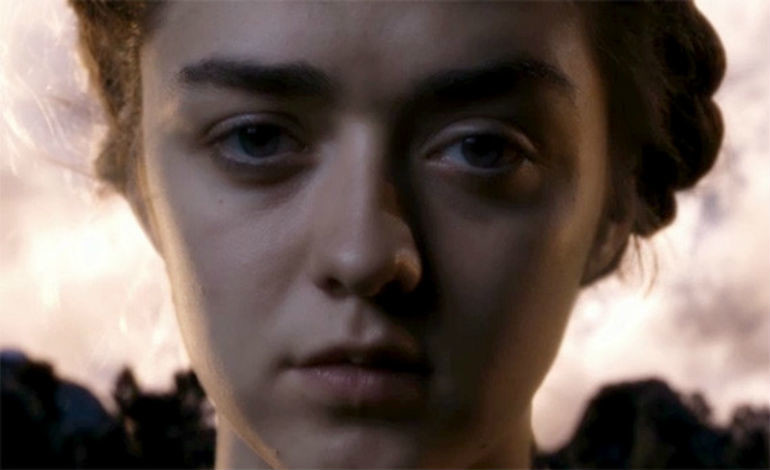Doctor Who: A Promise and a Longer Life
I’m not sure I’m only one who feels this way, but Doctor Who‘s “The Girl Who Died” seemed kind of … underwhelming. Or so it seemed on the surface anyway.
Don’t misunderstand. Vikings are cool: certainly cooler than fezzes. And definitely cooler than sonic sunglasses that lasted about as long as the fezzes did. And certainly Maisie Williams, as the actress that plays Arya Stark in Game of Thrones, brought a lot of resolve, fierceness, and presence to this episode in her own right. However, in the trailer for this season that Moffat flashed in front of our eyes, there were things hinted on that just … didn’t pan out the way they might have done.
The episode starts off at the end of a missing scene with aliens and epic space resolutions that we don’t see only for The Doctor and Clara to end up in early medieval times on Earth: near a Viking settlement. Then, after The Doctor’s sunglasses get destroyed by a simple Viking sword, they are taken to the settlement as prisoners: only for an alien posing as Thor to send rust-bucket soldiers with guns to abduct the strongest warriors.
Because, after all, it’s totally not the first time an alien race as impersonated human gods: especially not Norse deities.
The obligatory StarGate SG-1 reference aside, we find out these giant rust-buckets and the Odin-impersonator are called the Mira: yet another warlike race that wants to do some conquering and drink heavily distilled … testosterone? And even though Clara, yet again, can’t listen to The Doctor’s orders and gets herself and Ashildr, Maisie Williams’ Viking girl character, abducted along with the other soldiers it seems to be Ashildr herself that sabotages Clara’s attempts to talk the Mira down from dealing with the Earth: or at least her village. I guess Clara now knows what it feels like, but it’s doubtful these life lessons will sink in any time soon. And even then there is something inspiring about the defiance in Ashildr’s face and tone when she challenges the Mira.
I mean: it wasn’t as though the Mira were going to be intimidated by words anyway.
In the end, the way they actually deal with the Mira is brilliant and cruel in its own way. What is the worst way you can punish a renowned warrior race? It’s simple: you humiliate the crap out of them through trickery and blackmailing them with evidence of their dishonour.
There are two elements of note, however, in “The Girl Who Died.” The first is that we discover just why The Doctor chose the face of Lobus Caecilius: the Roman whose family he saved from Pompeii in his tenth incarnation. It does take a while for the realization to set in, but then you begin to remember something. Do you recall when The Doctor told Clara in “The Name of The Doctor” that the name he chose was a promise he made? Well, as it turns out The Doctor also considers regenerated faces promises. And it was his promise, then, in Pompeii to save what lives he can: no matter how terrible the odds truly were.
But then we have the other element. So Ashildr dies due to her role in The Doctor’s plan to defeat the Mira. We already had evidence that there was something strange about her. It’s true that we were also introduced to the fact that The Doctor’s idea of deja vu often occurs in reverse: that he has the feeling of having met someone before he actually does. So there was some evidence of what was about to happen.
You see, the thing about advanced warrior races is that they often have excellent medical technology. You know: the kind that existed in “The Empty Child?” Well, as it turns out, the Mira left some of that behind and … It’s funny really. I was personally annoyed with the fact that Moffat seemed to make such a big deal about this character in this Season’s trailer: as being somehow central to much of what was going to happen. Certainly, it would have been nice of Ashildr had been another Time Lady: perhaps someone The Doctor knew. It’s that kind of teasing of his that has gotten old pretty fast, which says a lot when you apply it to a show about time travel.
And yet … in a way this episode is kind of an intersection in The Doctor’s life. It’s not just about the flashbacks to his time as Doctor Ten, though they definitely play a part in that. The Doctor stated, in “The Lazarus Project” that “a longer life isn’t always a better one. In the end you just get tired. Tired of the struggle. Tired of losing everyone that
matters to you. Tired of watching everything turn to dust.” Then there is also his own encounters with and his responsibility for Jack Harkness and knowing what the price of immortality ultimately is.
Perhaps it’s different now that The Doctor knows there are other Time Lords left. Even so, in a poignant scene with Ashildr, she tells him that leaving her village — where they accept her as being strange — would be like death. So what will that mean for Ashildr now when she herself may well be immortal? Still, there might be some recompense in this. The Doctor did leave her with another Mira medical device, for someone else: in case she ever gets lonely and can’t bear to lose that one other person.
So there is that. And again, we are introduced to another familiar word from “The Witch’s Familiar”: hybrid. What does that mean and how will this all play out in Doctor Who‘s “The Woman Who Lived” … and beyond?










